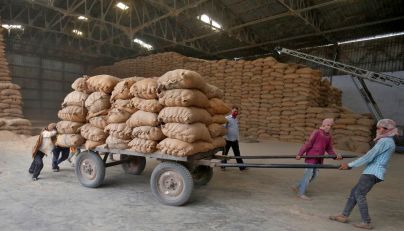Health
Global Food Prices Decline for Second Month, Reports FAO

World food prices decreased for the second consecutive month in October 2025, driven primarily by robust global supplies, according to the latest report from the Food and Agriculture Organization (FAO) of the United Nations. The FAO Food Price Index (FFPI), which tracks price changes for a range of internationally traded food commodities, averaged 126.4 points in October, reflecting a decline of 2.1 points, or 1.6 percent, from the revised figure of 128.5 points in September.
This downward trend in food prices was influenced by reductions in several key categories, including cereals, dairy products, meat, and sugar, which outweighed a slight increase in the vegetable oil index. Overall, the October FFPI was marginally lower than the figures from October 2024 and remained significantly below its peak of 160.2 points reached in March 2022, standing at 33.8 points or 21.1 percent less.
Key Factors Behind Price Declines
The FAO Sugar Price Index saw a notable decline of 5.3 percent from September, reaching its lowest point since December 2020. This drop is attributed to strong production levels in Brazil and anticipated increases in outputs from Thailand and India. Additionally, reduced crude oil prices have exerted downward pressure on sugar prices due to decreased demand from the biofuel sector.
Similarly, the FAO Dairy Price Index fell by 3.4 percent, largely due to a significant drop in butter prices attributed to ample export supplies from the European Union and New Zealand. The FAO Meat Price Index also decreased by 2.0 percent during the month, driven by sharp declines in pig and poultry prices. However, prices for bovine meat continued to rise, particularly in Australia, supported by strong global demand.
Future Projections for Cereal Production
Alongside the price index, the FAO also released updated forecasts for global cereal markets, indicating a projected increase in world cereal production of 4.4 percent in 2025, which is expected to reach a record level of 2,990 million tonnes. This anticipated growth is expected across all major cereals, suggesting a positive outlook for global food supply in the near future.
The FAO’s findings reflect a complex interplay of supply dynamics and market forces that continue to shape the global food landscape. As prices fluctuate, stakeholders across the agricultural sector will need to navigate these changes to ensure food security worldwide.
-

 Sports2 months ago
Sports2 months agoNetball New Zealand Stands Down Dame Noeline Taurua for Series
-

 Entertainment2 months ago
Entertainment2 months agoTributes Pour In for Lachlan Rofe, Reality Star, Dead at 47
-

 Entertainment4 weeks ago
Entertainment4 weeks agoNew ‘Maverick’ Chaser Joins Beat the Chasers Season Finale
-

 Sports5 days ago
Sports5 days agoEli Katoa Rushed to Hospital After Sideline Incident During Match
-

 Sports2 months ago
Sports2 months agoSilver Ferns Legend Laura Langman Criticizes Team’s Attitude
-

 Politics1 month ago
Politics1 month agoNetball NZ Calls for Respect Amid Dame Taurua’s Standoff
-

 Entertainment2 months ago
Entertainment2 months agoKhloe Kardashian Embraces Innovative Stem Cell Therapy in Mexico
-

 World3 months ago
World3 months agoPolice Arrest Multiple Individuals During Funeral for Zain Taikato-Fox
-

 Sports3 months ago
Sports3 months agoGaël Monfils Set to Defend ASB Classic Title in January 2026
-

 Sports3 days ago
Sports3 days agoJamie Melham Triumphs Over Husband Ben in Melbourne Cup Victory
-

 Entertainment1 month ago
Entertainment1 month agoTyson Fury’s Daughter Venezuela Gets Engaged at Birthday Bash
-

 Sports1 month ago
Sports1 month agoHeather McMahan Steps Down as Ryder Cup Host After Controversy





















